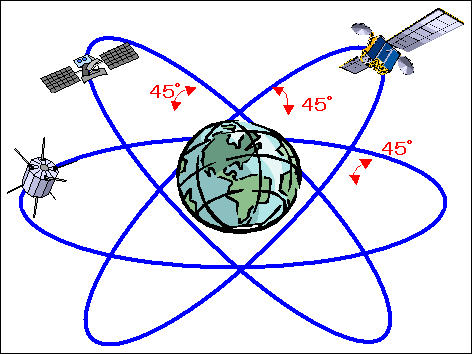Different Frequency Range Distribution
This table might not provide all the necessary information for specific frequency range.
No hard and fast rule for opting an antenna for a particular frequency be there.
Many electrical factors (eg radiation efficiency, radiation pattern, maximum antenna gain, antenna impedance, frequency characteristics) and structural factors (eg shape, size, appearance, cost and other economic aspects) are to be taken into account.
| Band | Frequency Range | Wavelength | Services | Remarks |
| ELF | 3 Hz – 3 KHz | – | Audio signal | |
| VLF | 3 – 30 KHz | 100 – 10 km | World-wide Telegraphy for ships, mine and marine communication | Audio and military navigation |
| LF | 30 – 300 KHz | 10 – 1 km | AM Broadcasting, Long distance point-to-point services, Navigation | |
| MF | 300 – 3000 KHz | 1000 – 100 m | AM Broadcasting, Navigation, Harbor telephony | General MF antennas– center-fed or folded dipoles Broadcasting antennas– inverted L or T antennas |
| HF | 3 – 30 MHz | 100 – 10 m | SW Broadcasting, OTH (Over the horizon) Radars | General HF antennas– Half-wave antennas, arrays like Yagi For TV transmission– Center fed dipole For Communication– Fan dipole+loop+vertical whip antennas |
| VHF | 30 – 300 MHz | 10 – 1 m | FM, TV, Radar, Short distance communication, Aircrafts and Ships Navigation, Telephony | Horizontal Polarization used, Horn+Corner+Parabolic Reflectors used, Slot radiators, Yagi arrays Broadband antennas ( conical unipole, conical dipole, biconical, discone antenna) All-around coverage given by vertical+horizontal+circular polarization For mobile – fin aerial antennas used |
| UHF | 300 -3000 MHz | 100 – 10 cm | LoS + Sate Comm TV, short distance communication, Radar, LAN, Cellular Mobile communication, GPS, Aircrafts Navigation, Aircraft Landing | |
| SHF | 3 – 30 GHz | 10 – 1 cm | LoS + Sat Comm Radar, Radio and TV relay links, Satellite Communication, Data transmission | Antennas used are horms, reflector antennas and lens antennas of different types. |
| EHF | 30 – 300 GHz | 10 – 1 mm | LoS + Sat Comm Millimetric wave Radars, Amateur | |
| – | 300 – 3000 GHz | < 1 mm | Experimental applications |
Some of the Facts on this table is referenced from Antennas for all applications, JD Kraus, 3rd Edition



Pingback: The best moments in Life you would always want them back